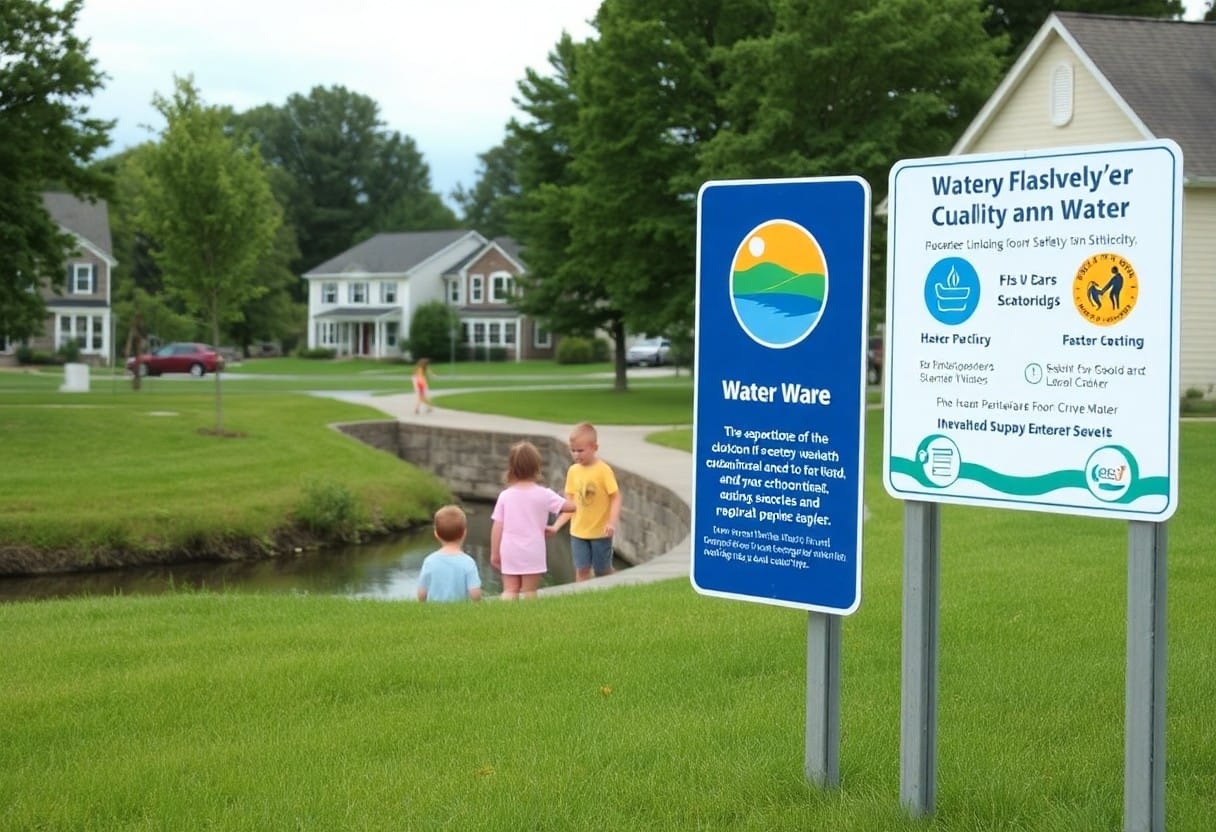With concerns rising around environmental safety, it’s necessary for you to understand the hidden sources of PFAS chemicals. These persistent substances, often labeled as “forever chemicals,” can be found in your everyday products, from food packaging to household items. Their potential health risks, including cancer and hormonal disruption, make awareness vital for protecting yourself and your family. By uncovering where these toxic compounds lurk, you can take informed steps to minimize your exposure and promote a safer living environment.

Understanding PFAS
For many, PFAS (per- and polyfluoroalkyl substances) may seem like a distant concern, but they are increasingly recognized as a significant environmental threat. These man-made chemicals are used in a variety of industrial and consumer products due to their ability to repel water and grease, making them pervasive in everyday life. Understanding PFAS is important for grasping their potential health impacts and environmental risks.
Definition and History
Definition of PFAS refers to a group of synthetic chemicals that have been in use since the 1950s, primarily for their water- and oil-repellent properties. Initially developed for military and industrial applications, these substances have since infiltrated various consumer goods, becoming a long-lasting presence in our environment due to their resistance to degradation.
Sources of PFAS Chemicals
To identify the sources of PFAS chemicals, it is vital to consider both industrial and household products. Common sources include non-stick cookware, water-repellent fabrics, firefighting foam, and even some food packaging materials.
In fact, these chemicals can leach into the environment, contaminating water supplies and soil, often exceeding safety limits set by health authorities. You might be surprised to learn that PFAS can also accumulate in your body, posing serious health risks over time. This persistent presence in your everyday items highlights the importance of being vigilant about the products you use, as avoidance is key to reducing your exposure to these potentially harmful substances.
The Hidden Sources
Some sources of PFAS chemicals are often overlooked. These persistent pollutants can infiltrate your life in unexpected ways, from products in your home to industrial processes. Recognizing these hidden sources is imperative for reducing your exposure and understanding the broader implications of PFAS on health and the environment.
Industrial Applications
At various industrial applications, PFAS are utilized for their water- and grease-repellent properties. These chemicals are commonly found in firefighting foam, coatings, and metals processing. Unfortunately, their widespread use can lead to contamination of soil and water systems, posing significant risks to your health and the ecosystem.
Consumer Products
Beside industrial use, PFAS chemicals are prevalent in several consumer products, including non-stick cookware, stain-resistant fabrics, and water-repellent outdoor gear. These everyday items can contribute to your exposure, often without your knowledge.
In addition, many seemingly safe consumer products are laced with PFAS, raising serious health concerns. Products like waterproof jackets, food packaging, and cosmetics may contain these hazardous chemicals. When you use these items, they can leach PFAS into your body, leading to potential adverse health effects. Greater awareness of the brands and products you choose is imperative in minimizing your exposure to these harmful substances.
Environmental Impact
Assuming you are aware of the pervasive nature of PFAS chemicals, it’s vital to consider their environmental impact. These substances do not break down easily, leading to long-term soil and water contamination. Their persistent presence can disrupt ecosystems, affecting wildlife and the quality of natural resources critical for human life. Understanding this impact is the first step in protecting your environment and health.
Soil and Water Contamination
Before discussing potential health risks, it’s important to recognize how PFAS can contaminate soil and water sources. When these chemicals are released into the environment, they can seep into groundwater supplies and accumulate in soil, posing risks to both agricultural and drinking water. This issue not only impacts local ecosystems but also poses challenges to public health and safety.
Human Health Risks
Below are some significant human health risks associated with PFAS exposure. Prolonged ingestion or contact with contaminated water or food sources can lead to various adverse health effects, such as increased cancer risk, liver damage, and thyroid disease. You may be surprised to learn that PFAS has also been linked to reproductive issues, which can have long-lasting implications for future generations.
But understanding the impact of PFAS on human health is vital for your well-being. Exposure can lead to serious conditions such as certain cancers, and liver disease, which can affect your quality of life. The risks extend beyond just physical ailments; they can also impact reproductive health, leading to developmental issues in children. By staying informed and advocating for cleaner environments, you can take proactive steps to protect yourself and your loved ones from these dangerous chemicals.
Regulation and Policy
Many concerns surround the effectiveness of current regulations regarding PFAS chemicals. As awareness grows about their health risks and environmental impact, policymakers face the challenge of addressing these hazardous substances while balancing economic interests. You may find it important to stay informed about proposed changes in legislation as the push for more stringent regulations gains momentum.
Current Regulations
To combat the PFAS issue, several state and federal regulations are currently in place, although these vary widely. You should be aware that while some states have enacted strict limits on PFAS in drinking water, federal guidance remains less comprehensive. As a result, ongoing advocacy efforts are vital for pushing for more uniform regulations across the country.
Future Directions
After recognizing the gap in PFAS regulation, lawmakers are exploring more comprehensive strategies to manage these chemicals effectively. You might see initiatives aimed at increased testing, labeling requirements, and broader bans on PFAS in consumer products. These measures aim to enhance your safety and reduce exposure risks.
Understanding the future directions of PFAS regulation is important for you as an informed citizen. Enhancing public awareness and advocacy initiatives helps push for more robust testing and restrictions on PFAS usage. Additionally, the evolution of policies will likely involve greater collaboration between states and the federal government to ensure comprehensive management of these hazardous chemicals. Emphasizing transparency and accountability in regulatory processes will be vital in protecting your health and the environment from the dangers posed by PFAS chemicals.
Mitigation Strategies
Your proactive approach can significantly reduce the impact of PFAS chemicals in your life. Prioritizing the use of products free from these substances, filtering your drinking water, and being mindful of food packaging are imperative steps. Additionally, staying informed about local environmental regulations and engaging in community advocacy can drive larger-scale changes, helping to protect both you and future generations from the harmful effects of PFAS.
Reducing Exposure
About tackling PFAS exposure begins with understanding your environment. Using activated carbon filters for water and choosing PFOA-free products can minimize contact with these persistent chemicals. Additionally, frequent cleaning of your home, especially in areas prone to contamination, further decreases your exposure.
Cleanup Efforts
With increasing awareness of PFAS contamination, numerous cleanup efforts are emerging across various communities. Local and federal agencies are investing in remediation technologies, which can effectively remove PFAS from soil and water sources. Furthermore, public-private partnerships are facilitating faster responses to contamination issues, ensuring that affected areas are addressed and restored. Staying informed about these initiatives empowers you to support efforts that enhance environmental safety.
Strategies employed in cleanup efforts involve innovative techniques, such as thermal treatment, which effectively breaks down PFAS compounds, and excavation of contaminated soil for proper disposal. Bioremediation is also gaining traction, utilizing living organisms to degrade harmful substances. Engaging with these methods not only aids in remediation but also raises awareness about the ongoing battle against PFAS, ultimately contributing to safer environments for you and your community.
Case Studies
Despite the rising awareness of PFAS chemicals, numerous incidents illustrate the extent of contamination across various locations. Here are some significant case studies:
- Hoosick Falls, NY: More than 60% of residents exposed to PFOA faced health risks, leading to a $850,000 settlement for affected parties.
- Blakeley, AL: A major industrial discharge resulted in a 100% contamination rate of local drinking water sources.
- DeWitt, MI: Over 200 residents effected by groundwater contaminated with PFOS, causing long-term health implications.
- Rapid City, SD: Lead to investigation after detecting PFAS levels exceeding EPA safety limits by tenfold.
Notable PFAS Contamination Events
Between 1950 and 2020, dozens of communities dealt with severe PFAS intrusions into their water supply, culminating in alarming health statistics. For instance, communities exposed to high levels of PFOA and PFOS reported increased rates of kidney cancer, thyroid disease, and other serious health conditions.
Lessons Learned
Among the key takeaways from these events is the importance of environmental monitoring for PFAS. Communities learned to proactively test their water to prevent contamination before it escalates.
The Hoosick Falls case emphasizes the significance of community engagement in environmental oversight. You should realize how crucial it is to advocate for regular testing and transparency from local industries and government agencies. This not only helps mitigate health risks but also encourages the development of cleaner alternatives to PFAS, fostering a safer environment for future generations.
Summing up
Conclusively, understanding the hidden sources of PFAS chemicals is imperative for protecting your health and the environment. By identifying everyday products that may contain these persistent substances, you can make informed choices to minimize your exposure. Awareness of your surroundings, from household items to food packaging, empowers you to advocate for safer alternatives. Stay vigilant, as knowledge about PFAS helps create a healthier future for you and your community.



















